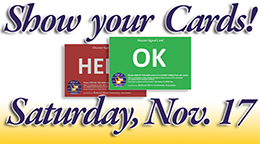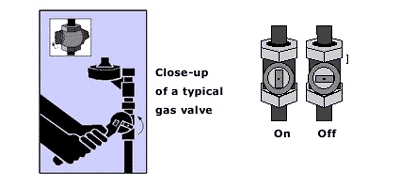Before the winter weather settles in, RSCA would like to remind everybody this November to prepare your home for the possibility of a disaster. This month’s issue of The PILOT focuses on suggestions and checklists for preparing your home. Last year, the Redwood Shores Community Association (RSCA) provided articles on many different aspects of Disaster Preparedness, but the article that was probably the most significant was the one that provided instructions on how and when to turn off your gas supply. For that reason, we are again addressing the topic of gas shut-off in this issue.
In addition, the printed version of The PILOT once again includes red/green Disaster Signal Card for newcomers to Redwood Shores and for those of you who may not have put your card aside last year. This tool will improve the ability of first responders such as the Fire and Police departments, as well as our Community Emergency Management Teams (CERT) to quickly identify homes in need of help when landline, cell phone and on-line communications are not working.

Following last year’s distribution of the signal cards, CERT held a drill that proved that all of Redwood Shores could be surveyed in as little as five hours if roads were mostly clear for travel. CERT will be holding a follow-up drill this year on Saturday, November 17th when you will be asked once again to “Show Your Cards” so that they can be seen from the street. We urge all residents to cooperate with this local disaster drill.
Everyone who lives in Redwood Shores knows that the possibility of a major disaster is real. Although there are several possible causes of a future disaster, the greatest threat is from an earthquake. The 1906 San Francisco earthquake was a once in a hundred year quake which means that we are now overdue for another major quake. Although there is nothing we can do to prevent an earthquake, you CAN prepare your home and family.
In this issue you will find information on:
- Making a family disaster plan
- Getting Information during a disaster
- Preparing your home for a big shake
- Creating a Go Bag
- Creating an Emergency Supply Kit
- Preparing pets for a disaster
- Preparedness at our schools
- Instructions on when and how to turn off your gas
In addition to informative articles dealing with preparedness, RSCA is providing a new Disaster Signal Card which will allow residents to signal for help when landline telephone, cell phone and on line communications are not working. This tool for Redwood Shores will improve the ability of first responders such as fire and police departments as well as our Community Emergency Response Teams (CERT) to quickly identify homes in need of help.
Please remove the Signal Card from this magazine and read the instructions. On Saturday, November 17th, Redwood Shores CERT will hold a Disaster Signal Card drill. Residents are asked to “Show Your Cards” (GREEN side only!) that day so they can be seen from the street. On that day CERT teams will practice surveying our neighborhoods. We urge all residents to cooperate with this local disaster drill.




